Sequence in Fabric Collage Part 2: Faces—Fabric Collage By the Numbers #8
As I mentioned in the previous entry—#7 in this series of posts, the optimal sequence in which you begin assembling your fabric collage subject does play a role in how easily it begins to come together. It’s a logical step-by-step approach that best utilizes the underlying drawing that you’re using as a guide (and that you’ve put effort into creating).
With the human face, the sequence to tackle a face generally runs from front to back: what’s “nearest” is done first, “farthest” is done last. This typically means that you begin with the nose (since its the most forward facial feature), then the eyes, then the mouth—usually. The post below explains why I recommend you approach a fabric collaged face in this way.
Are there exceptions to that “rule”? Of course there are! Every subject and of course every face presents its unique challenges and approaches to fabric collage. But this post definitely describes the go-to sequence that I almost always work with, and the way I almost always recommend to my students for their portrait collages. May it also almost always, be an optimal and logical approach to fabric portraiture for you.
Tom and I are using part of our summertime to provide you with a sort of DIY Summer Collage Camp—or a Winter Collage Camp for those of you in the Southern Hemisphere. We’re calling it “Fabric Collage By the Numbers,” addressing all the steps of creating a fabric collage quilt. We hope you’ll participate from wherever you are in the world—no travel involved.
Pulling from six and a half years of fabric collage blog posts as reference material, we are delving into that content to give you a summertime lineup that you can follow along with. At the start of this series, there were eight weeks left of summer (not by the calendar but by the very subjective lens of the Maine climate!) so each week we’ll deliver two posts for a total of sixteen in the series—unless we re-discover more relevant posts along the way!
Posts from our Summer Special include; #1—choosing your photo (posted on July 7), #2—choosing a subject (posted on July 9), #3—making a pattern (posted on July 14), #4—how to choose fabric (posted on July 16), #5—making a fabric palette (posted on July 21), #6—using glue in fabric collage (posted on July 23), #7—sequence in fabric collage (posted on July 28), to eventually hanging your fabric collage on the wall (planned delivery on August 27), we’ll cover each step with at least one previous post.
You may have read some of these posts before, so this will be a refresher for you. The information may also be reminiscent of information found in our online learning resource the Fabric Collage Master Class. If so, know that you’re not imagining things. Much of this information is gathered, reorganized and expanded upon in the Master Class. For more information about the Fabric Collage Master Class, click the button below.
Today’s post marks the half-way point in our Summer Special series of posts—I hope they are providing a creative distraction from the heat and extreme weather so many of you and others are facing. Stay safe and cool everyone.
Sequence in Fabric Collage Part 2: Faces
One of the many topics I could address as far as sequence in fabric collage goes, is faces. Where do you start? What comes next? What do you leave until the end?
First, it’s important to be able to look at a face and understand how it’s shaped. In a recent blog post, “The Topography of the Fabric Collage Face”, I talked about how you can view the face as a landscape with ridges, valleys, and plains. If you keep that in mind, what I say next may make more sense.
In general, with any subject, I want you to start with what’s in front. Asking yourself, “What’s on top?” is one way of addressing the subject. In the case of a person’s face, what’s in front, or on top, is the nose. So, start with the nose.
1. Nose
But why? Why start with the nose?
There’s a couple reasons. The first has to do with your pattern and with the nature of fabric collage: one piece of fabric overlaps another. One shape of fabric gets trimmed to the line you’ve drawn on your pattern (such as the nostrils and point of the nose). The next fabric shapes get tucked under those trimmed-to-shape pieces (such as the future shadows under the nose).
So when you start with the nose, you’re using the pattern lines to their best advantage by knowing exactly where and what you need to trim away. One way of thinking of it is, you want to keep as much of your pattern visible for as long as possible. I mean, you spent effort making the pattern—don’t cover it up right away by starting with the shadows under the nose, or worse, “blocking in” the entire face with larger pieces of fabric. You can’t use your pattern as a guide if you cover it up right away.
The other reason I say to start with the nose is that it’s simpler than the eyes or mouth—a good warm-up as you progress through the face. It also leads you to spread your fabric shapes directly down from the ridge of the nose and into the cheeks, and upward into the forehead. In the process, you’re going to be working with color values—the lights and darks of your fabrics—and patterns they contain that could work for facial contours. It’s all about acclimating your eyes and mind to what you’re looking for in order to create the face.
2. Eyes
As your fabric shapes start to spread out from the nose, try not to cover up the lines for the eyes in the process, ’cause the eyes come next.
But now, where do you start with the eyes? Do you block in the entire eye and work inward toward the pupil? No. Start with the iris, the colored part of the eye, maybe even cut that circle to include a darker center for a ready-made the pupil. In the photo above, I found designs in my fabrics that had curves and pattern that fit the eyelid curves, and gave the eyes lashes at the same time.
Note: depending on how accurate I need to be with a face, as in, is this someone I know or not, I create eyes in different ways, even different sequences. For a more advanced layering sequence demonstration, check out this “Eye for an Eye” post.
For this generalized face, which is honestly, much more freeing and fun to make, I expanded outward from the iris into the whites of the eye. The triangular shadowed whites get tucked under the iris and lids, having already used the drawn lines for the size of the iris and the curves of the lids. See how that “what’s in front,” “what’s on top,” sequence works for eye construction as well?
3. Mouth
After the eyes, I move on to the mouth.
Typically, I’ll start with the upper lip, it is “on top of” the lower lip, after all. I almost always use more than one piece of fabric to give the lips more interest and form, moving from the brighter side of the face to the darker side. Trim the upper lip line straight where it meets the lower lip. Then slip the lower lip fabrics underneath. Once those pieces are tacked together and in place with a little glue, the surrounding face fabrics can be slipped under the mouth unit. Sequence.
And so forth
Once I’ve completed the first draft (add more details later) of the major features, I fill in the rest of the face: finish the cheeks, chin, forehead, ears, and so on. Everything spreads out from the the central features, so the order really doesn’t matter.
Trimming to the defining lines of facial features and then the outside of the face, is very satisfying and calms down the chaos of all those bits of fabrics. To create a definitive jaw line, trim to the line like I did above. The neck fabrics will slip underneath, as in photo below.
Where hair falls in a portrait sequence will vary case by case. If there’s bangs that need to be just so, I’ll do them before completing the forehead and then the forehead fabrics will go under the bangs. But with this portrait, I left my options open. I’m going to see what I find in my fabric stash—what inspires me—for the last part in this particular example of sequence in fabric collage.
There will be more subjects and more posts about sequence to come, but no promises as to when.
The photos above are lifted from my 2020 series of Thursday Night in My Studio Live! presentations on the face. These presentations are one of the new ways of teaching fabric collage we developed last year. They’re now available as recordings.
So for further and more detailed instruction in creating features and faces in fabric collage, you can purchase these Thursday Night in My Studio Live! recordings for $7 each.
Facial Features Nose: Thursday Night in My Studio Live!
Facial Features Eyes: Thursday Night in My Studio Live!
Facial Features Mouth: Thursday Night in My Studio Live!
Facial Features—Neck and Hair: Thursday Night in My Studio Live!
Facial Features—Child vs. Adult Faces: Thursday Night in My Studio Live!
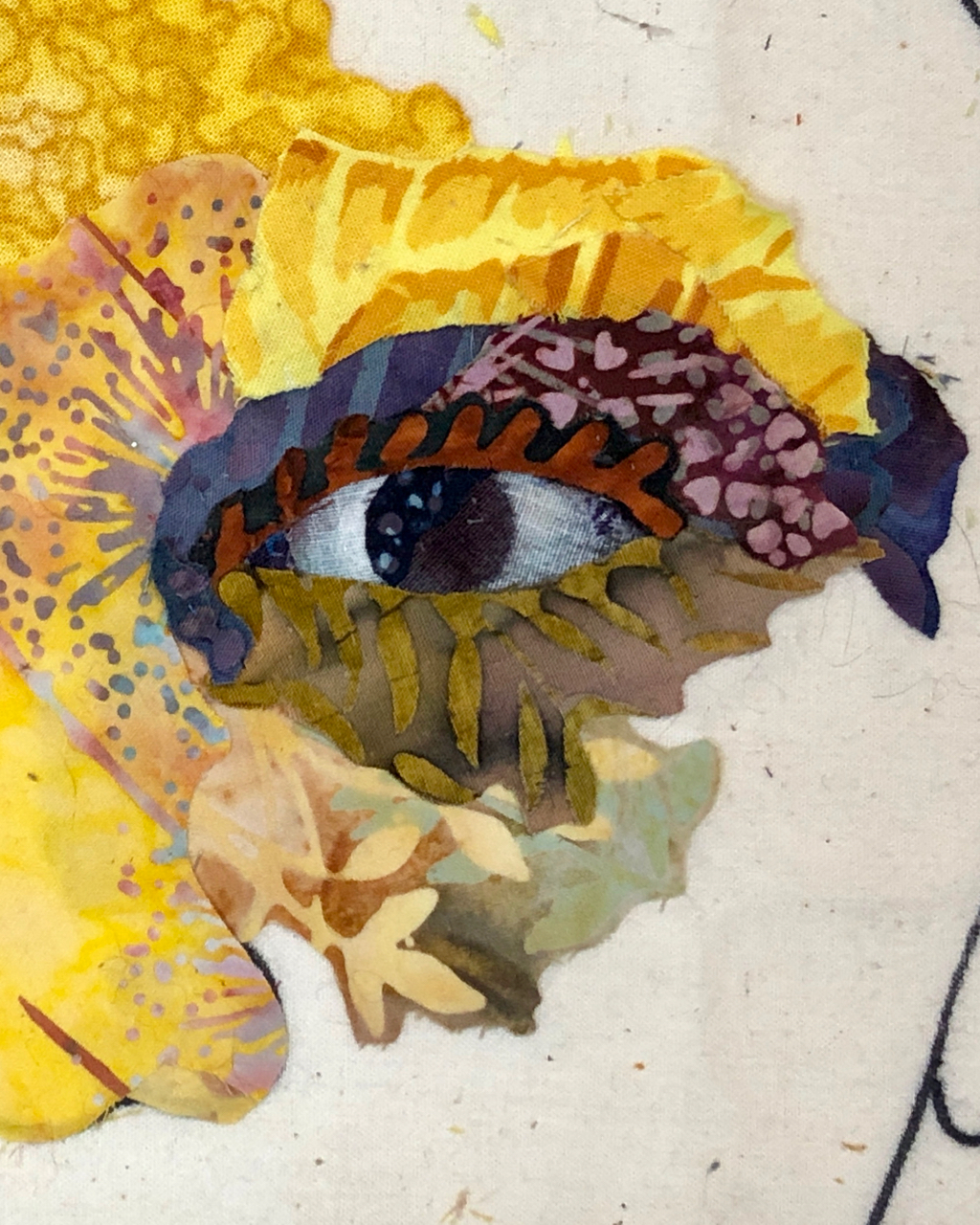
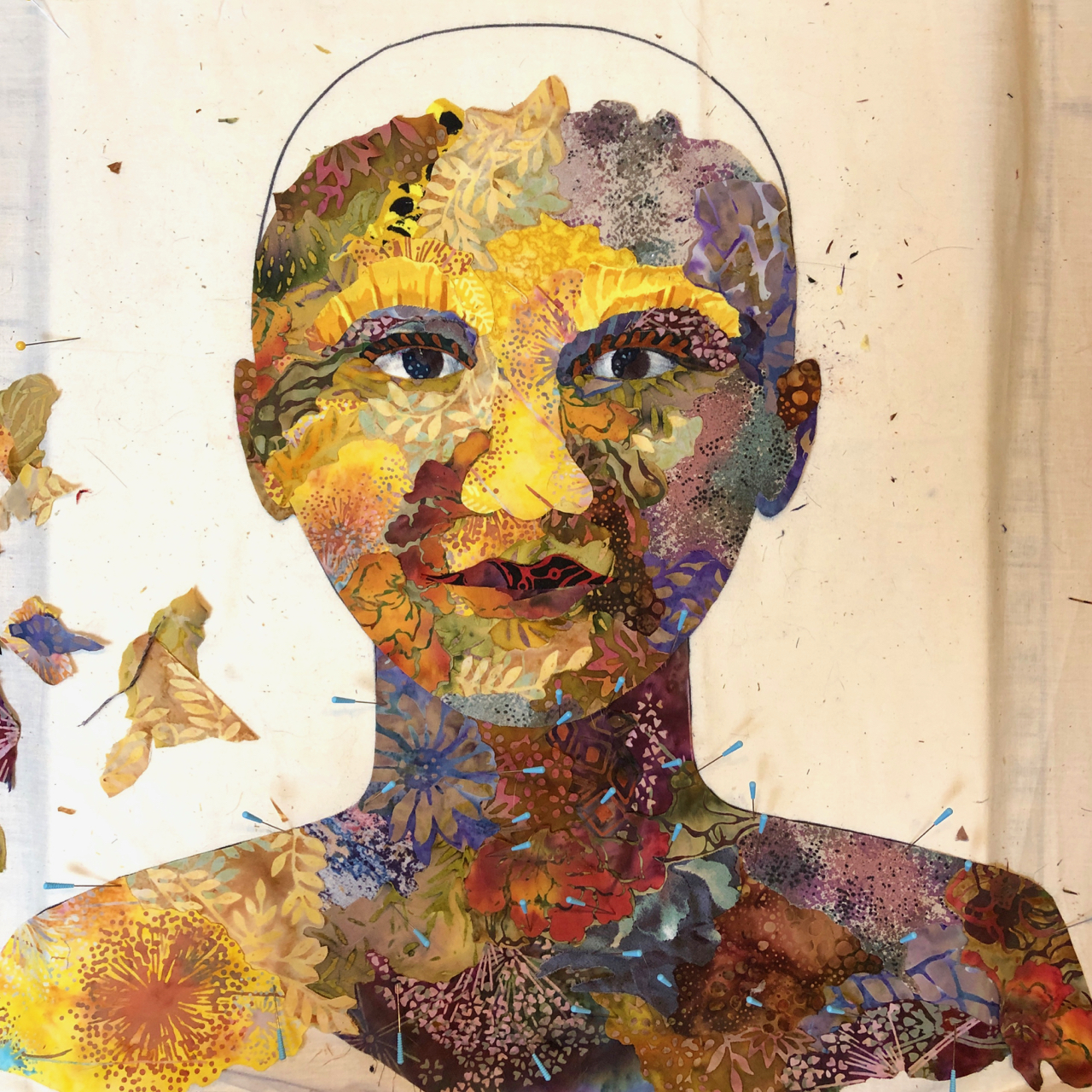
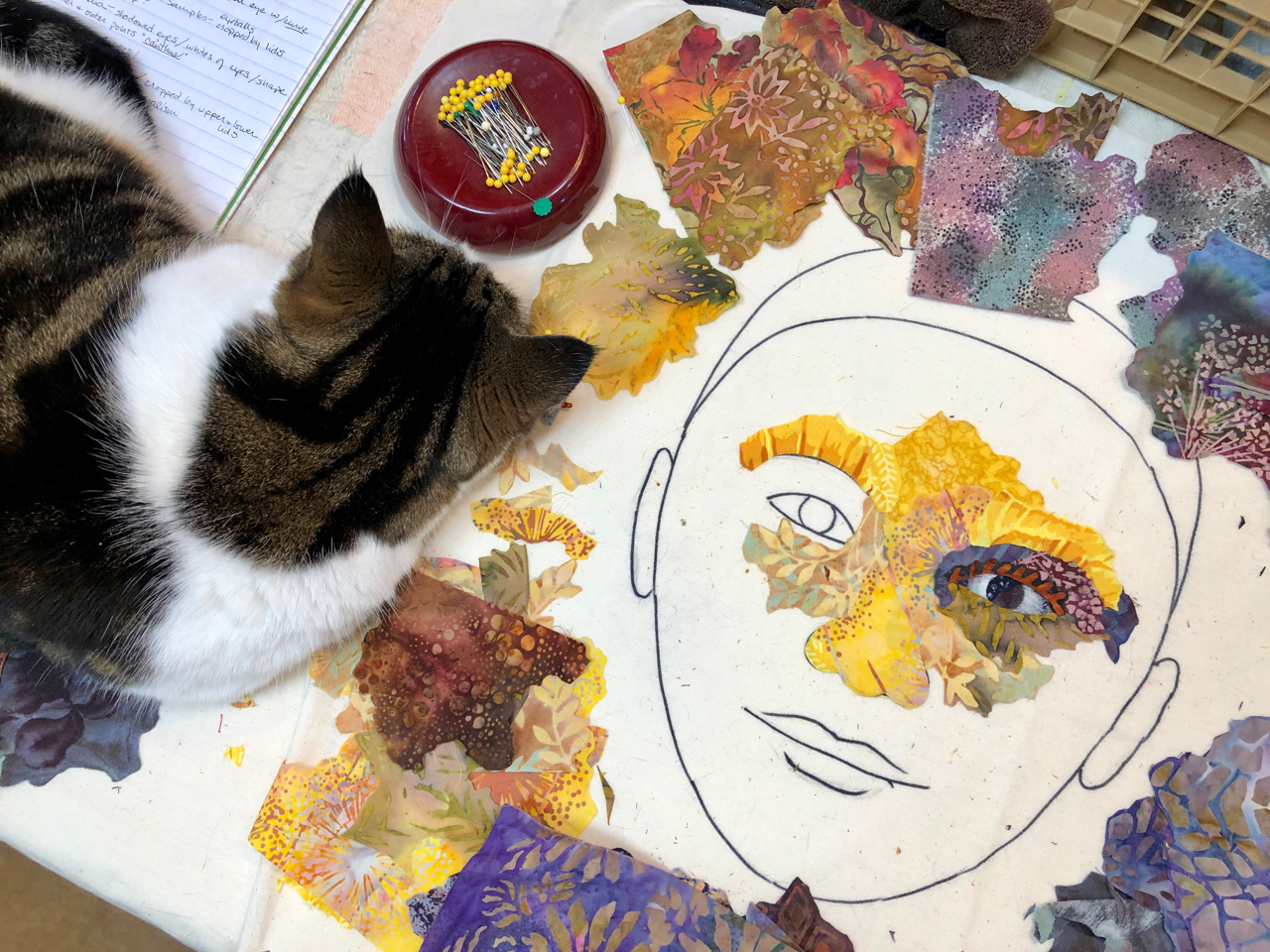
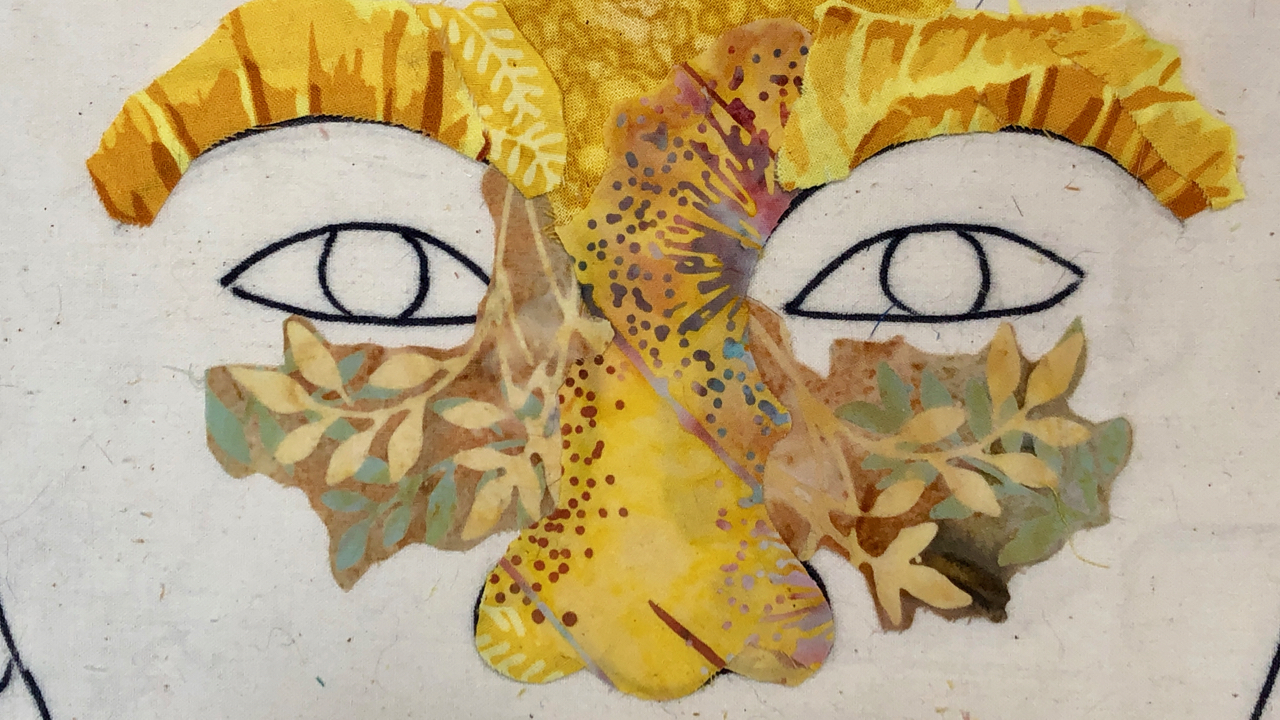
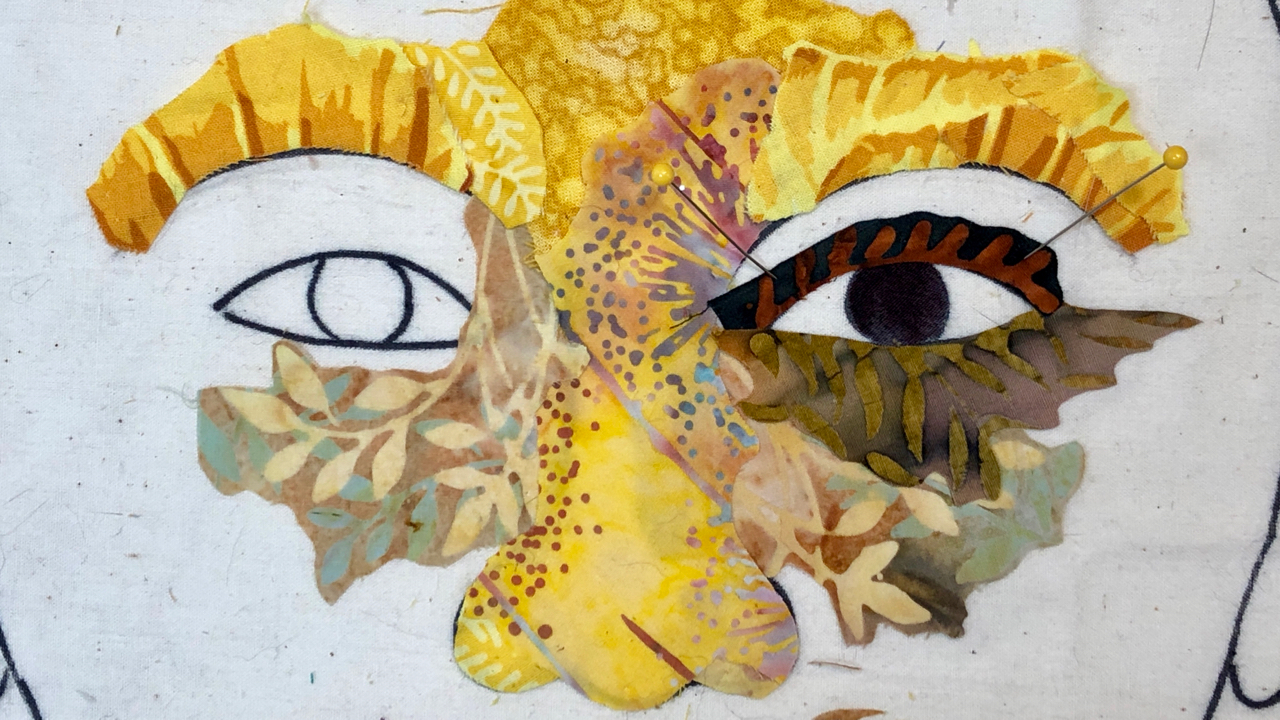
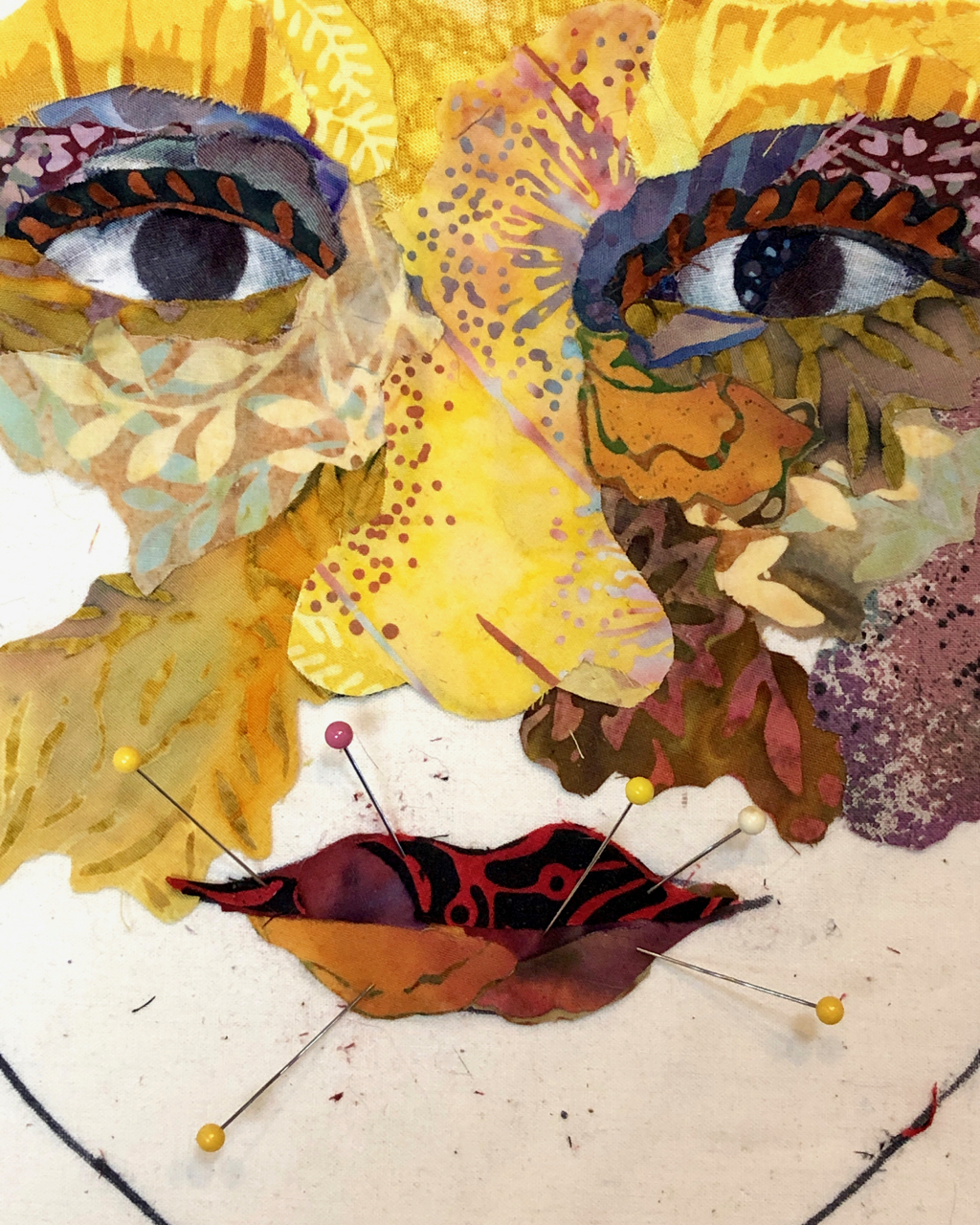


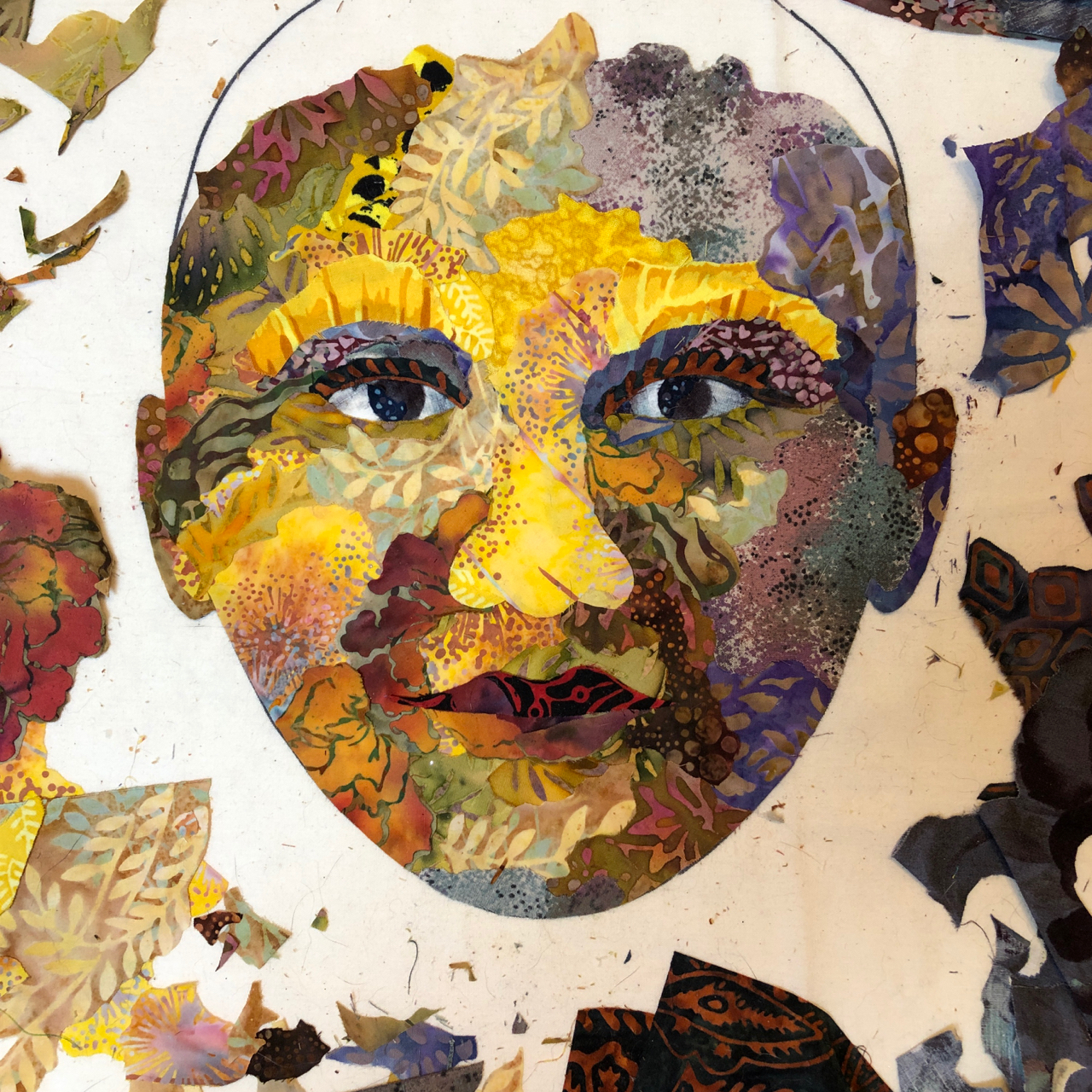
One Comment